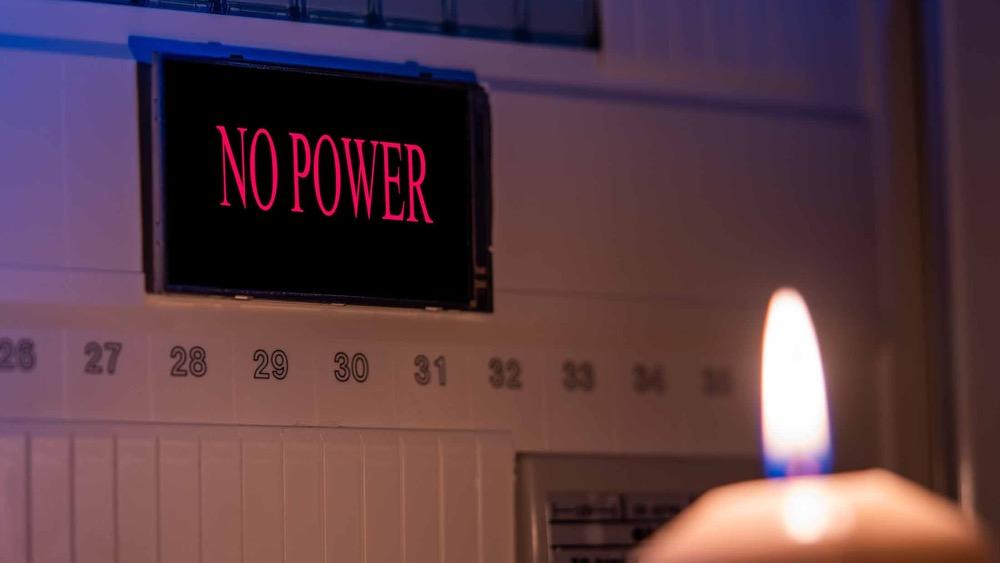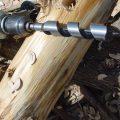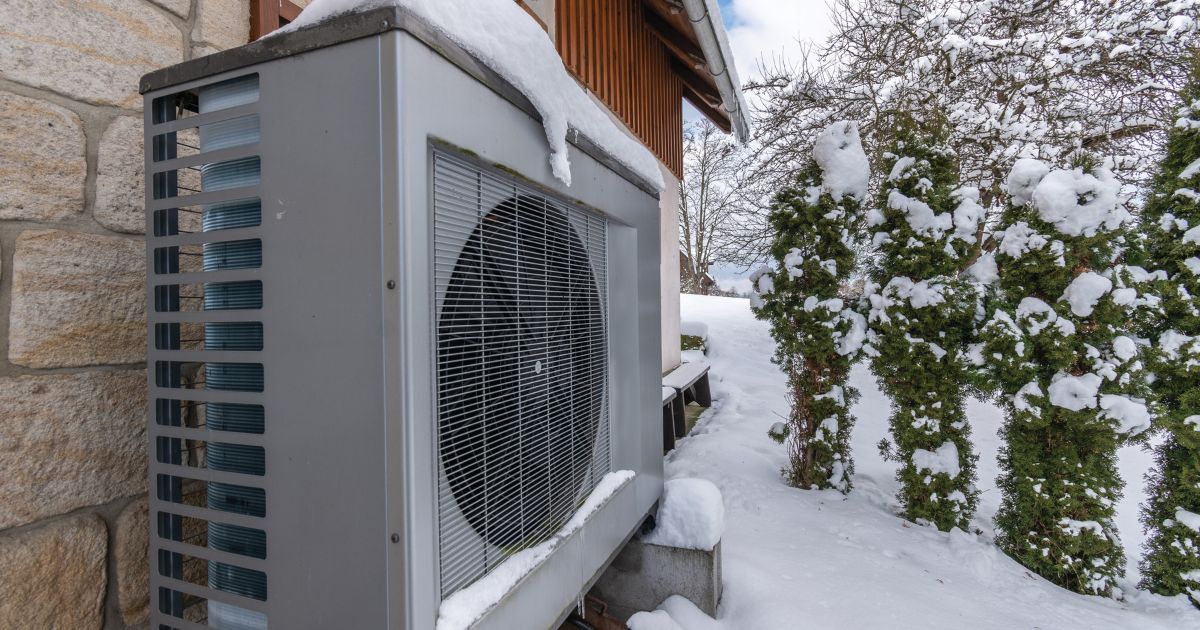When it comes to keeping you powered during outages lasting more than a few hours, multi-fuel generators keep electricity flowing using more than one source of fuel. Click below to watch the most impressive example of multi-fuel generator technology that I’ve seen so far. It comes from Champion, a manufacturer that continues to impress me.
VIDEO TRANSCRIPT: As a homeowner, one reason you might buy a generator is to provide backup power for your home when the electrical grid goes down. After all, who wouldn’t want the lights to stay on and the internet to keep working and the coffee pot to still operate, even during a blackout?
Now that’s simple enough to understand, but what’s not so simple is the situation you may face during your next blackout if it lasts longer than a short time. How will you find fuel for your generator if the outage continues for more than a few days? What has to happen to keep your generator operational for a week or even a month? In this video, I’ll explain how to prepare yourself ahead of time to power through outages that last longer than a day or two. What you’ll get in this video is the most critical information that I’ve found vital over the last 35 years of owning and using generators.
These include the three things that any well-prepared generator owner should have sorted out ahead of any outage. Get these details in place right now, and you’ll enjoy a generator that lives up to its potential, able to power you through most outages, even ones that last for a long time. The details for long-term generator output and working life include three features, feature number one is a multi-fuel design. Feature number two is a supply of stabilized gasoline and engine oil, plus access to propane or natural gas if your generator can use these. And finally, feature number three is a safe, legal, and convenient way of delivering generator electricity to the important circuits within your home. Now for the details.
Get a multi-fuel generator
Most portable generators burn gasoline only, and this is fine as far as it goes. But what if you run out of stored gasoline and can’t get out to buy because the roads are blocked with downed trees or snow? Or what if you can get to the gas station, but none of the local places are equipped with generators so the gas pumps can operate when the grid is down? Very few urban gas stations have outage-proof pumping capacity to keep fuel flowing during a blackout. But even if they did, how long will gas stations have fuel to sell if delivery trucks can’t get into the city with more gasoline? As the name suggests, multi-fuel generators are made to run on more than one type of fuel, and this means more options for keeping things working at your home, all with less work and uncertainty on your part.
Dual fuel generators typically burn gasoline via a carburetor in the usual way, but they also have a hose and a regulator that allows a 20 or 30-pound propane cylinder to connect to the machine, bypassing the carburetor and the need for gasoline, of course. With other adapters, a dual-fuel generator can be connected to propane tanks as large as a thousand gallons, allowing many days of continuous operation with no need to refuel. Propane replaces gasoline and its tendency to go stale during storage. That’s important. In fact, some people prefer propane to gasoline for generators precisely because it never goes bad. The carburetor is completely bypassed when running on propane, so plugged carburetor jets are really a non-issue. Just remember that propane does deliver somewhat lower power output than gasoline, especially in winter, as internal propane tank pressures are lower with the colder temperatures.
Tri-fuel generators are better than dual-fuel models for resilience because they can use three kinds of fuel, not just two. While tri-fuel models can run on gasoline or compressed propane from a large tank or portable tank, just like dual fuel units can, tri-fuel generators can also run on natural gas delivered via the supply that your home may already have. You’ll need some fittings and a shutoff valve to connect your generator to a gas outlet, of course, but the result is complete freedom from having to obtain fuel in any kind of tank. Natural gas is also a lot cheaper than gasoline and propane for a given run time of the generator. At the time I’m making this video, propane costs roughly four times as much as natural gas for a given output of electricity. Natural gas also never goes stale. It needs no space to store tanks, and it never requires you to shut off the engine and refuel. The only time you’ll have to shut off a natural gas-ready portable generator is for maintenance and oil changes and things like that.
Now imagine you have a supply of gasoline for your generator, but after a four-day outage following a freak ice storm, all your gas cans are empty. Gasoline supplies at local service stations are also gone or soon to be gone. This scenario is a problem for anyone with a single-fuel gasoline power generator, but no problem at all if you’ve got some propane tanks for a barbecue grill on hand. It’s even less of a problem if you have natural gas at your house and you own a tri-fuel generator. A quick-release hose can connect a tri-fuel unit to your household gas supply, and this is a huge advantage if you can do it. Now, why is it an advantage? Well, even during extended electrical power failures, natural gas supplies generally keep on flowing because they’re underground. They’re not aerial like wires are with your tri-fuel generator running on natural gas. The only reason you need to shut down is to change the engine oil after every 100 hours or so of operation.
Have a supply of fresh fuel and engine oil
Freedom from the hassles of running your generator on gasoline are some of the reasons people prefer to operate with propane or natural gas. So what are these hassles of gasoline? Well, there are two main ones. First, you need enough fuel to keep you going for at least a few days. Longer is better, of course. An 8,000-watt generator, for instance, operating at half load, burns about three-quarters of a gallon of gasoline per hour. If you run your generator all the time, then this translates to 18 gallons of fuel per day or roughly three large gas cans, and that’s a fair amount. Then there’s the age-old problem of gasoline going stale. Without taking precautions, today’s regular gasoline loses its ability to burn cleanly after just about six months or less of storage. So even if you do have enough gasoline storage at your place to power your generator for the long haul, will that fuel be any good when you need it?
One excellent option to keep gasoline in reasonable shape during storage is to add gasoline preservatives as you fill gas cans at the station. A big jug of preservatives lasts a long time because gasoline generally only needs one ounce of stabilizer for every two and a half gallons of fuel. That’s 30 millilitres for every 10 litres of fuel if you’re a metric person. Gasoline treated like this keeps fresh for a couple of years, so it’s well worth doing.
The next thing to remember is the type of gasoline you buy. Ethanol is in most regular grades of gasoline these days, and even some premium fuels contain ethanol. The thing is, ethanol makes gasoline go bad faster. That’s why the best gas for storage is premium and ethanol free. Some brands offer high-test premium gasoline with no ethanol. So check out the website pure-gas.org for a constantly updated list of ethanol-free gasoline.
The next thing you need to do is rotate your gas supply, which is another reason some people prefer propane or natural gas. Fuel stabilizer and ethanol-free premium gasoline will significantly extend the freshness of your generator fuel supply, but this gas will still go stale in time, even if you did add a stabilizer. So that’s why you should purchase some labels to stick on your gas cans and mark the date that they were filled. Use this fuel in your vehicles as a regular course of events after 12 to 18 months or so, and then replace the gas in the cans with fresh as you’ve used them.
Ensure there are safe, legal generator connections to your home
The longer the duration of a power outage. The more important it is to have generator power delivered to actual circuits in your home, not just extension cords leading to the toaster and TV. To make this sort of thing happen legally and safely, you need hardware installed in your home. The primary safety issue is that it must be impossible for your generator to back-feed power through the service cables supplying your home and then out to the grid. The grid cables that are inadvertently energized because of power from a private generator back feeding through the overhead lines can actually kill workers working on those lines. So this is why laws around generator connections were created.
A transfer switch is one option for safely and legally connecting your generator to your household electrical panel. It provides power to whichever circuits in your home you want to be energized at that time. Another connection option is a device called GenerLink. That’s actually what we have here at my house. This is a piece of proprietary hardware that’s installed between your electrical meter and the meter base, allowing your generator to connect to the GenerLink via a cable. A GenerLink is fast and easy for any electrician to install. And that’s why people like them. Now, I have to say that the GenerLink does cost about as much as the hardware needed for a transfer switch system, and that’s a pretty steep price. However, the GenerLink installation is much faster, easier, and simpler. There’s no disruption to your existing wiring system.
Besides the practical advantages of being prepared for a long-term outage, it’s satisfying too. Simply knowing that you’ve got what it takes to keep everyone in the family warm, dry, illuminated, fed and safe is a big part of being prepared for the unpredictability of the world these days. More than ever, smart people prepare ahead of time, especially when it comes to the energy they need.
Steve Maxwell and his wife Mary live on a 90-acre modern homestead on Manitoulin Island, Ontario in a stone house they built with local materials beginning in 1985. Steve is Canada’s longest-running home improvement and how-to columnist and editor of Home and Property. He divides his time working on the land, building things large and small, and creating articles and how-to videos that teach sustainable, self-reliant, hands-on living skills.













